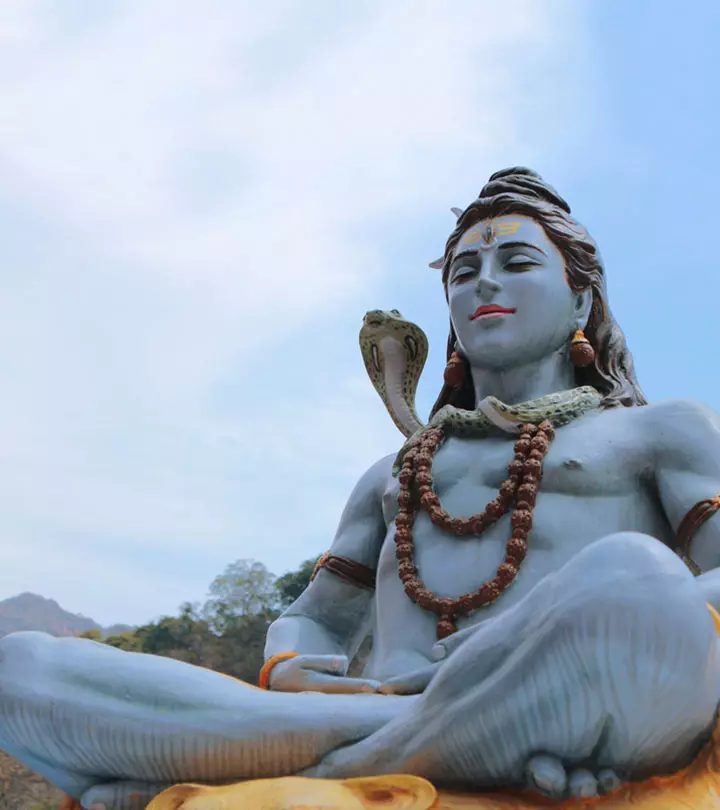Bhakti Yoga – What Is It And What Are Its Benefits?

Image: Shutterstock
Love and devotion make the world a better place. Don’t you think so? Wealth, fame, and a spiraling professional career keep you going, but how far? At some point, you want to realize the purpose of all that you do and experience pure bliss. If you are one such individual, you have come to the right place. Here, we talk about Bhakti yoga and how it has the potential to change the world. Read on to find out.
Bhakti Yoga And Its History
Bhakti Yoga was first spoken about in the Bhagavad Gita as devotion, dedication, and surrender to the concept of god or a strong aspect that the practitioner profusely believes in and would like to attain salvation through. This idea was taken by the Hindu tradition and developed into various sects such as Vaishnavism, Shaivism, and Shaktism. Each sect has a deity that the practitioner believes in and dedicates himself to reach higher realms of consciousness. Bhakti Yoga is a practice that will make you realize that you are no different from the universal energy.
A book called Bhagavata Purana further explained the concept through interesting plots and stories. Bhakti Yoga rose to being interpreted in various ways, keeping the core intact. There is a form of yoga called Panchayatana Puja that worships multiple deities but believes that all are different manifestations of one great power.
Bhakti Yoga’s uniqueness lies in its confrontation with the rigid caste system and breaking it down to reach everyone. Lower caste women, who are usually placed at the lowest of the social strata, were part of the bhakti traditions too, making it a revolutionary path.
When Bhakti Yoga traveled to the West, the Hindu religion mask that it was wearing was taken off, and people embraced it irrespective of their faiths and beliefs. It became a practice where one embraces what their heart desires for or an idea or feeling that they are attached to. Thus, Bhakti Yoga now has become a worldwide phenomenon, bettering people’s lives.
The Bhakti Yoga Practitioners
There are 4 kinds of Bhakti Yoga practitioners that the Bhagavad Gita mentions. They are:
- Those who suffer from anxiety and stress and are looking for relief.
- Type 2 are those who are curious about God or a higher spiritual energy and would like to know what it is.
- The third category consists of those who expect rewards for following the practice in this life or the afterlife.
- The fourth are those wishing to only experience the union of self with God and expecting nothing else from the practice.
The Different Shades Of Bhakti
The level and emotion of expressing your feelings or love to a concept or deity vary and following are some different types:
1. Shanta – Here, the devotee is not very vocal about his devotion. He is calm and blissful and remains in the thought of God without expressing it out much.
2. Dasya – The devotee gives in completely to the deity and serves him with utmost care and attention. Similar to Hanuman serving Lord Rama.
3. Vatsalya – In this form, the devotee unconditionally loves the deity similar to the love a parent would have towards their child.
4. Sakhya – The believer considers the deity as his friend and shares all his joys and sorrows with him without any inhibitions or fear. The relationship is transparent and truthful.
5. Madhurya – Here, the devotee is completely soaked in the love of God and considers him as his/her beloved. The devotee becomes one with the God, which is the ultimate manifestation of Bhakti.
How To Practice Bhakti Yoga
There is no one way. Since the time of its inception, certain formats have been laid out to get a person into the Bhakti mode. You can start with basic idol worship and go up to a realization of oneness with God.
There are 11 fundamental factors that Sri Ramanuja laid out in this aspect. They are:
- Abhyasa, which is continuous thinking of God.
- Viveka, which is retraining from discrimination towards anybody.
- Vimoka is longing for God and freeing ourselves from everything else.
- Satyam is truthfulness with your feelings and Bhakti.
- Arjavam is straightforwardness with your ways and behavior.
- Kriya is helping and doing good to others wholeheartedly.
- Kalyana is wishing health and happiness to everybody.
- Daya is showing compassion towards the misfortunate and helping them.
- Ahimsa is non-violence and non-injury towards living beings unnecessarily or consciously.
- Dana is charity, giving to those in need.
- Anavasada is being positive and cheerful and spreading those vibes.
The Bhakta should surrender himself to God by praying and worshipping him, chanting and singing his prayers through a discipline, and training towards God. One-pointed devotion and complete surrender help in immersing oneself in God. Having a God’s form in mind becomes easier for the Bhakta to pray and love, instead of an abstract concept.
In your daily routine, plan a pattern of uttering mantras, reading the scriptures, and gazing meditatively at the God’s form in a photo or an idol. Increase your love towards him until you become unconscious of your body and realize you are one with him. Recite his name, sing his glories, and make sure every act of yours resonates Bhakti.
At your home, keep the worship place clean and decorate it. Burn incense and light a lamp in the presence of God. Bathe, wear clean clothes, and sit to pray to him in whichever manner you choose to.
Benefits Of Bhakti Yoga
- Bhakti Yoga softens your personality and keeps you away from negative emotions like anger, ego, and arrogance.
- It gives you peace and knowledge.
- You feel joyous and blissful through Bhakti Yoga.
- It takes away worry, anxiety, and fear and keeps you calm.
- Bhakti Yoga reduces your sorrows and pains.
- It will give you an experience of the divine.
- Bhakti Yoga helps you control your senses and handle tough situations with ease.
Now, let us answer some common doubts on Bhakti Yoga.
Frequently Asked Questions
Is Bhakti Yoga religious?
Not necessarily. One can adapt it to be a purely spiritual practice that can be followed by a person of any faith or religion.
Does the concept of God have to be necessarily in a deity form?
No, only that it becomes easier if it is in a deity form. The devotee will have a stable reference to concentrate upon and meditate.
All the world’s problems can be solved with love and devotion. Bhakti Yoga is a path that takes people through it. It is an emotion of purity, unconditional love, and utmost devotion. If each of us is filled with such feelings, there is no scope for hatred. We recommend you to try Bhakti Yoga and become a part of making the world a better place.
Read full bio of Shirin Mehdi




























Community Experiences
Join the conversation and become a part of our empowering community! Share your stories, experiences, and insights to connect with other beauty, lifestyle, and health enthusiasts.